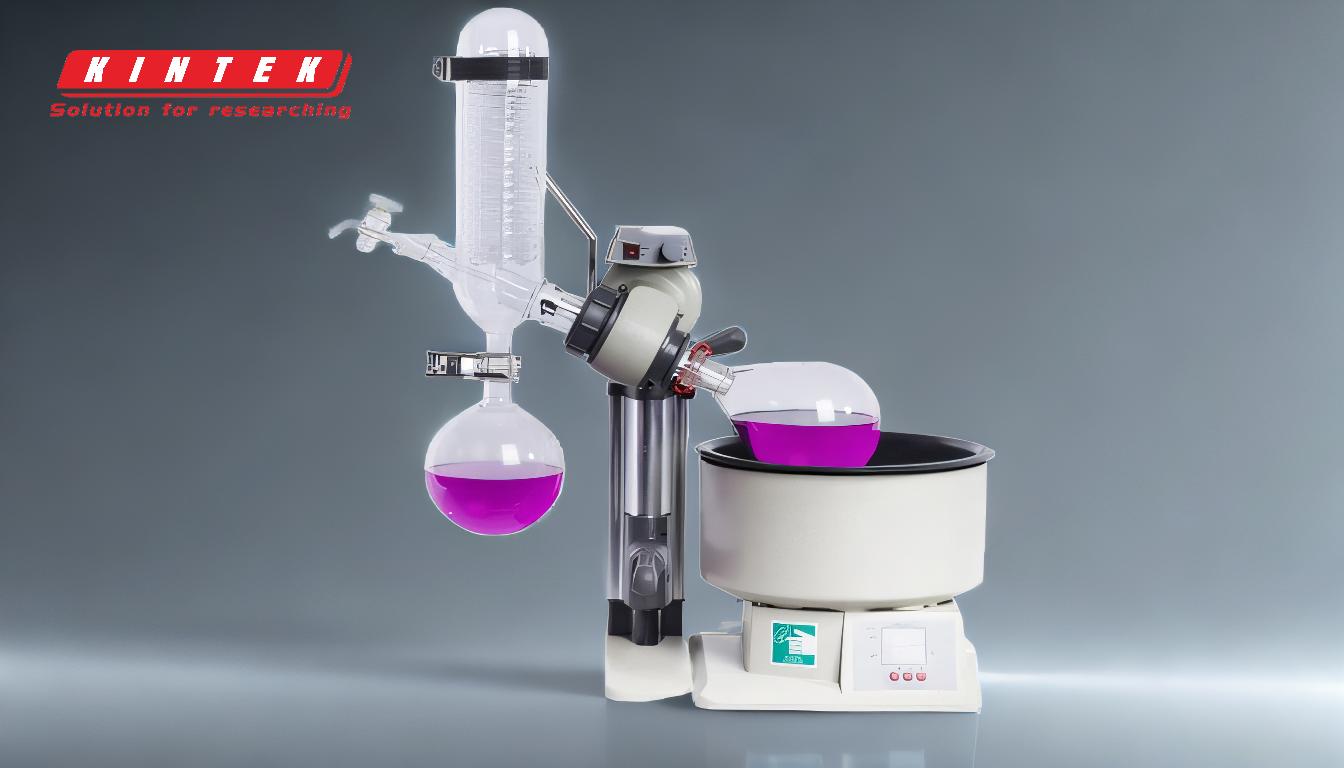The vacuum in a rotary evaporator system plays a critical role in enhancing the efficiency and effectiveness of the distillation process. By lowering the pressure inside the system, the vacuum reduces the boiling point of the solvent, allowing it to evaporate at lower temperatures. This not only speeds up the evaporation process but also minimizes the risk of thermal degradation of heat-sensitive compounds. The vacuum system is essential for achieving gentle and controlled evaporation, making it a key feature in laboratory settings for solvent removal, concentration, and purification processes.
Key Points Explained:

-
Lowering the Boiling Point of Solvents:
- The primary purpose of the vacuum in a rotary evaporator is to reduce the boiling point of the solvent. This is achieved by decreasing the pressure inside the system, which allows the solvent to evaporate at a lower temperature than it would at atmospheric pressure. This is particularly useful for heat-sensitive compounds that could degrade at higher temperatures.
-
Enhancing Evaporation Efficiency:
- By lowering the boiling point, the vacuum system facilitates faster and more efficient evaporation. This is crucial in laboratory processes where time and energy efficiency are important. The reduced pressure ensures that the solvent evaporates quickly without requiring excessive heat, which can also save energy.
-
Preserving Sample Integrity:
- The use of a vacuum allows for gentle evaporation, which helps preserve the integrity of the sample. This is especially important in applications involving delicate compounds, such as in the food and pharmaceutical industries, where maintaining the flavor, aroma, or chemical structure of the sample is critical.
-
Controlled and Gentle Evaporation:
- The vacuum system provides a controlled environment for evaporation, ensuring that the process is gentle and consistent. This control is essential for achieving precise results in laboratory experiments, where even slight variations in temperature or pressure can affect the outcome.
-
Separation of Solvent from Compound:
- The vacuum system aids in the separation of the solvent from the compound of interest. By lowering the boiling point, the solvent can be evaporated off more easily, leaving behind the desired compound in a more concentrated form. This is particularly useful in purification and concentration processes.
-
Reduction of Thermal Degradation:
- By allowing evaporation to occur at lower temperatures, the vacuum system minimizes the risk of thermal degradation. This is important for heat-sensitive materials that could be damaged or altered by exposure to high temperatures.
-
System Pressure and Boiling Point Relationship:
- The relationship between system pressure and boiling point is fundamental to the operation of a rotary evaporator. The vacuum system adjusts the pressure to create an ideal environment for the solvent to boil at a lower temperature, ensuring efficient and effective evaporation.
-
Use of Vacuum Pump:
- The vacuum pump is a key component of the system, responsible for maintaining the low-pressure environment inside the rotary evaporator. It continuously removes air and vapor from the system, ensuring that the pressure remains low and the boiling point of the solvent stays reduced.
-
Special Seal for Vacuum Maintenance:
- The rotating system of the rotary evaporator is equipped with a special seal that allows the apparatus to maintain a vacuum. This seal is crucial for ensuring that the system remains airtight, preventing any leaks that could disrupt the vacuum and affect the evaporation process.
-
Control and Ventilation:
- The vacuum system is controlled using a stopcock at the highest point of the condenser. This allows for precise regulation of the vacuum level and provides a way to ventilate the system after the solvent has been removed. This control is essential for ensuring the safety and efficiency of the process.
In summary, the vacuum in a rotary evaporator system is essential for lowering the boiling point of solvents, enhancing evaporation efficiency, preserving sample integrity, and ensuring controlled and gentle evaporation. It plays a critical role in the separation of solvents from compounds, reduces the risk of thermal degradation, and relies on the relationship between system pressure and boiling point. The vacuum pump and special seal are key components that maintain the low-pressure environment, while the control mechanisms ensure precise regulation and safety.
Summary Table:
| Key Function | Description |
|---|---|
| Lowering Boiling Point | Reduces solvent boiling point for gentle evaporation at lower temperatures. |
| Enhancing Evaporation Efficiency | Speeds up evaporation and saves energy by reducing pressure. |
| Preserving Sample Integrity | Protects heat-sensitive compounds from degradation. |
| Controlled Evaporation | Ensures consistent and precise results in lab processes. |
| Solvent Separation | Facilitates easy separation of solvents from compounds. |
| Thermal Degradation Reduction | Minimizes risk of damage to heat-sensitive materials. |
| Vacuum Pump & Seal | Maintains low-pressure environment for efficient operation. |
| Control & Ventilation | Allows precise regulation of vacuum levels and safe system ventilation. |
Optimize your lab processes with a rotary evaporator—contact our experts today to learn more!















